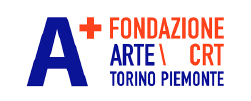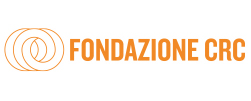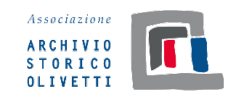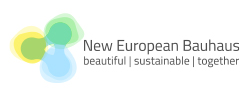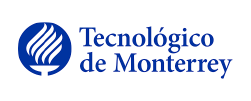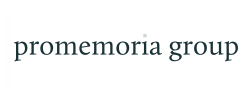— Portfolio
Our Projects
Oliviero Toscani Archive
The project, carried out in collaboration with Promemoria Group, aims to enhance the immense cultural heritage held in the archives of Oliviero Toscani, the internationally renowned photographer and communicator. This heritage includes a vast assortment of materials: thousands of photographs, many of them unpublished, personal and professional correspondence, as well as a large collection of documents and editorial publications.
The initiative is distinguished by the innovative use of artificial intelligence, employed to analyze, catalog and make the contents of the archive more easily accessible, with the aim of preserving and disseminating the historical and artistic memory of Toscani’s work. Through advanced technological tools, the project aims not only to organize and digitize the materials, but also to create new ways for the public to enjoy them, thus fostering a deeper understanding of the artist’s work and the cultural context in which it developed.

Riva shipyard heritage historical research program
The project aims to conduct in-depth historical research on the heritage of Cantieri Navali RIVA, a leading luxury yacht building brand founded in 1842 in Sarnico (BG), on the shores of Lake Iseo. The program has a special focus on the history of the Aquarama speedboat, an authentic design icon since 1962. Adopting a methodology of historical research linked to systemic thinking, the research contributes to enhance and communicate the multiple narratives that the heritage of the Riva shipyard encompasses: from technological to corporate history, from design to communication without neglecting industrial relations. The project aims to enhance the shipyard’s tradition and innovation, highlighting the link between craftsmanship and technology, distinctive elements that have made Riva a symbol of excellence and refinement in the luxury yachting sector.

Research project with Juventus FC
The research project initiated in 2017 with Juventus FC and the SYDERE Center, together with the team from the Dyson School of Design Engineering at Imperial College London, focused on the Juventus Stadium (now Allianz Stadium). The goal was to improve the fan experience before, during and after matches. The research included behavioral design studies to promote positive behaviors among fans and improve the use of spaces. The study of the Omar Sivori Club area resulted in a new concept to improve the décor and stimulate interaction among fans. The effectiveness of the new configuration was evaluated using mass motion software, confirming improvements in people flows and interactions.
The research also suggested new design directions such as the visual identity of the hall, new solutions for connecting the stands and the club, multisensory experiential pathways, and new food-related consumption and socialization scenarios.
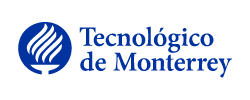
Arqueología en tránsito
The traveling exhibition Arqueología en tránsito, which opened in Tijuana during Design Week 2024 and has been remounted in San Diego, explores the relationship between individuals and artifacts to analyze the complexities of contemporary migration. The result of collaborative research at Tecnologico de Monterrey, it collected symbolic objects from various Mexican territories. The methodology was based on co-creative workshops, classifying artifacts by utility, historical relevance, emotional load and social impact. The exhibition uses archaeology, ethnography and design to narrate migration experiences, highlighting the role of objects in the context of global borders. By inviting reflection on the construction of barriers and the rise of migration, Arqueología en tránsito promoted empathy and awareness, demonstrating the transformative power of design and research in understanding the challenges of contemporary society.
The exhibition, curated by Pier Paolo Peruccio and Josè de la O, open in Tijuana (Mexico) and San Diego (USA) during the two Design Weeks: 4- 5 May 2024 and 19-25 September 2024, respectively.

Olivetti en México: diseño, comunicación, arquitectura
The Olivetti Design Talks project was created with the aim of telling the story of Olivetti’s historical innovation in a creative and engaging way, paying special attention to young people and keeping alive the tradition of collaboration with the Polytechnic University of Turin. Originally conceived as a series of live meetings in the Blue House Auditorium in Ivrea, the project has been adapted to pandemic through a “virtual auditorium,” taking advantage of digital tools to reach a global audience. The project brings together experts from a variety of fields (historians, designers, entrepreneurs, philosophers, etc.) to explore different aspects of Olivetti’s history, from its architecture to its design, and address issues related to innovation. A case in point is the Lettera 22, a symbol of Olivetti’s excellence, which is a starting point for a broader reflection on the company’s history and future, with a narrative that combines past and future.

Canavese 2030
The project is part of Canavese 2030, an independent civic-inspired think tank established with the aim of promoting the sustainable, cultural and economic development of the Canavese territory. The initiative focuses on the creation of a visual identity project and the enhancement of local resources, taking a systems approach that considers the connections between environment, community, economy and culture to foster balanced and lasting growth.
Through a participatory and collaborative process, the project involves Confindustria Canavese and a number of other local authorities, institutions and businesses in the area, with the intention of stimulating a sense of belonging and awareness among citizens. The visual identity developed aims to represent in a coherent and recognizable way the peculiarities of Canavese, highlighting its traditions, manufacturing excellence and scenic beauty.
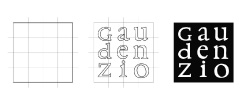
The renaissance of Gaudenzio Ferrari
The widespread exhibition The Renaissance of Gaudenzio Ferrari involved Varallo, Vercelli and Novara between March and September 2018, attracting more than 37,000 visitors. Promoted by the Piedmont Region and organized by Abbonamento Musei, it displayed the works of the 16th-century artist, accompanied by cultural and participatory activities. The project aimed to enhance local heritage and regenerate marginal territories, stimulating cooperation and development. Communication, with a dedicated app and logo, fostered place branding, especially in Varallo, where Gaudentius’s symbol was adopted by local producers, relaunching such excellences as Valsesia toma cheese and Walser slipper. The project has activated territorial marketing strategies and enhancement processes destined to continue with the support of the region and local authorities.
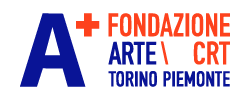
CRT Arte: The masters of italian photography
The project focuses specifically on the collection of the Fondazione per l’Arte Moderna e Contemporanea CRT, with a particular focus on the enhancement and promotion of the segment of postwar Italian photography that constitutes a fundamental part of this collection. The initiative aims to explore how this specific area of photography fits into the broader context of contemporary art, analyzing its development, influences and historical evolutions through time. It is articulated in a curatorial approach that includes critical review and comparison between postwar Italian photographic works and other international experiences, creating a dialogue between various artistic and photographic traditions. The intent is to highlight how photography, in the postwar period, has assumed a central role in addressing social, political and cultural issues, reflecting the transformation of the Italian and global landscape.
Museo del Tempo | Mario Tebenghi
This project, currently in its embryonic phase, was created with the aim of rediscovering and enhancing the work of Mario Tebenghi, a Piedmontese advertising graphic designer known for his contribution in the field of art and craftsmanship applied to the making and restoration of sundials and sundials. His activity, carried out mainly in Piedmont, but also in Valle d’Aosta, Lombardy and Liguria, left an important mark on the cultural and artistic landscape of northern Italy, contributing to the preservation of a heritage that is often neglected but of great historical and symbolic value.
The project aims to deepen the figure and work of Tebenghi through the collection, study and documentation of his works. The initiative aims to restore visibility to these artifacts, which, besides serving a practical function, represent artistic expressions linked to tradition and local identity. In the future, there are plans to hold exhibitions, publications and cultural tours.

